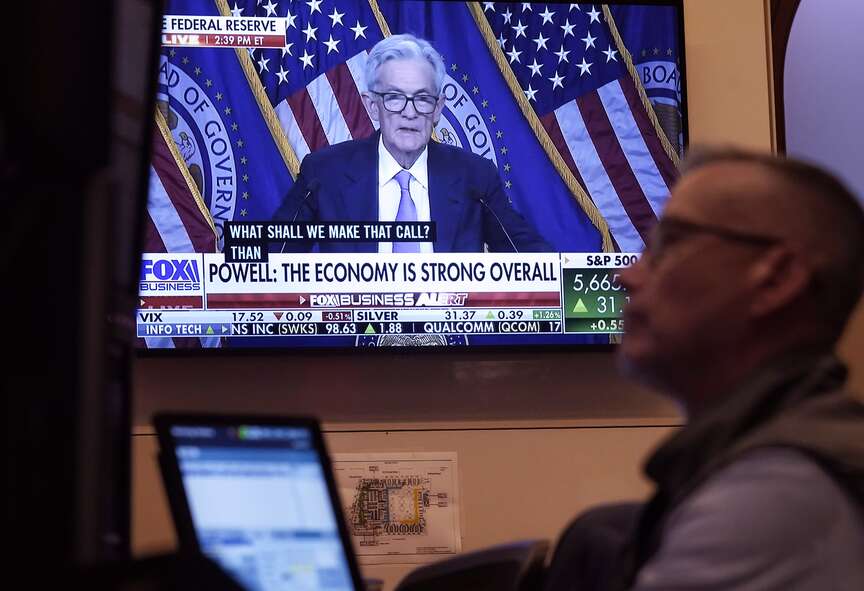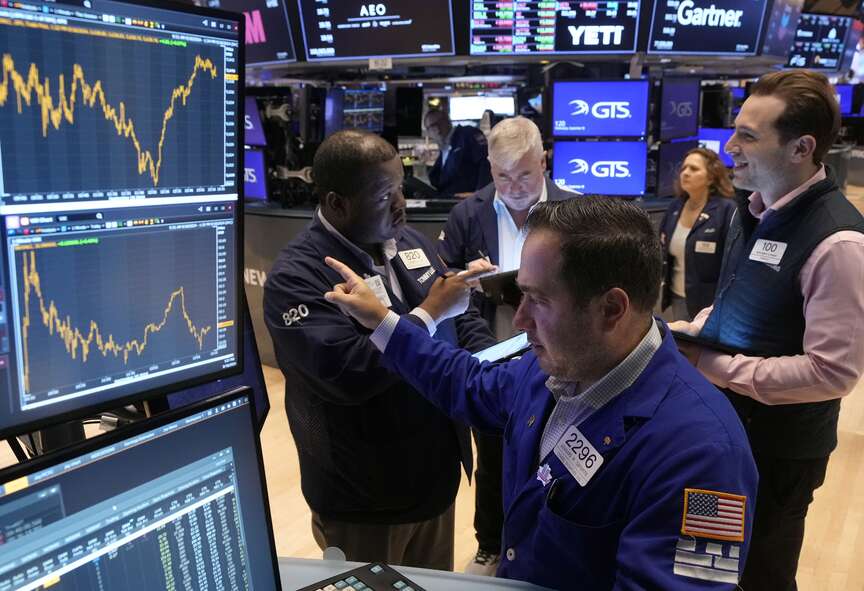NEW YORK — U.S. stock indexes edged lower Wednesday after the Federal Reserve kicked off its efforts to prevent a recession with a hefty cut to interest rates.
The S&P 500 slipped 0.3% to pull 0.9% below its all-time high set in July. The Dow Jones Industrial Average dipped 103 points, or 0.2%, though it remains close to its record set on Monday. The Nasdaq composite fell 0.3%.
The momentous move by the Fed helps financial markets in two big ways. It eases the brakes off the economy, which has been slowing under the weight of higher rates, and it gives a boost to prices for all kinds of investments. Besides stocks, gold and bond prices had already rallied in recent months on expectations that cuts to rates were coming.
Because the move was so well telegraphed, and because markets had already climbed so much in anticipation of it, Wall Street’s reactions were relatively muted despite the Fed’s 180-degree turn on rate policy.
The Fed released forecasts Wednesday that said its median official expects to cut the federal funds rate by another half of a percentage point through the end of the year. That could mean a traditional-sized cut of a quarter of a percentage point at each of its two remaining meetings scheduled for 2024.
Some critics say the Federal Reserve may have already kept interest rates too high for too long, doing damage to the economy.
“When the Fed is behind the curve, it sometimes takes a big move to catch up to where they should have been all along,” said Brian Jacobsen, chief economist at Annex Wealth Management.
Other critics, meanwhile, say the Fed will need to be careful about cutting rates too much because of the possibility that inflation will remain stubbornly higher than it’s been in recent decades.
Powell repeated several times that the Fed does not feel “a rush to get this done” and will make its decisions on interest rates at each successive meeting, depending on what incoming data say.
“We’ll move as fast or as slow as we think is appropriate in real time,” he said. For now, he said, “the U.S. economy is in a good place, and our decision today is designed to keep it there.”
Like stock prices, Treasury yields wavered up and down repeatedly immediately after the Fed announced its cut and published its projections.
The 10-year Treasury yield eventually rose from 3.65% late Tuesday to to 3.70%. The two-year yield, which more closely follows expectations for Fed action, edged up from 3.60% late Tuesday to 3.62%.
On Wall Street, shares of Intuitive Machines soared 38.3% after NASA awarded it with a contract worth up to $4.82 billion for communication and navigation services the space agency will use to establish a long-term presence on the moon.
Trading in Tupperware Brands remained halted after the company filed for Chapter 11 bankruptcy protection. Its stock has been sinking, down to 51 cents, since a mini-revival early in the pandemic sent its stock above $30.
Shares of McGrath RentCorp, a company that rents and sells mobile office trailers, portable classrooms and other structures, fell 3.1% after it agreed to terminate its proposed buyout by WillScot following tough scrutiny of the deal from U.S. regulators.
All told, the S&P 500 slipped 16.32 points to 5,618.26. The Dow dropped 103.08 to 41,503.10, and the Nasdaq composite lost 54.76 to 17,573.30.
In stock markets abroad, indexes fell modestly in Europe after rising in much of Asia.
The Bank of Japan and the Bank of England are also holding monetary policy meetings later this week. Neither central bank is expected to move on rates, though the language of what the officials say could be an indicator of later moves and still influence markets.
Information for this article was contributed by Yuri Kageyama and Matt Ott of The Associated Press.













